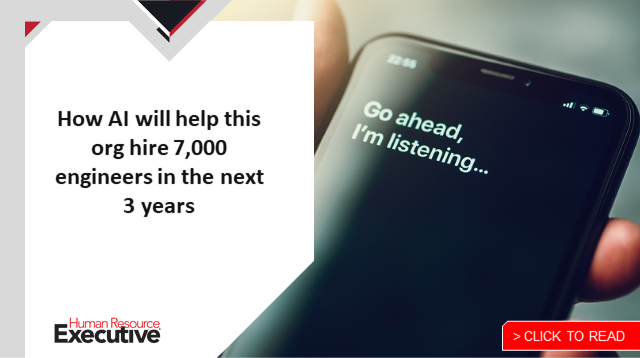HR leaders and talent acquisition professionals need to be nimble, respectful and transparent when acquiring and seeking to retain new talent in today’s overheated job market. At the same time, they must prepare for the role AI will play in hiring new talent and once they do find the perfect candidate, they must pounce with a ready-to-go job offer.
These were some of the insights shared by panelists in Eightfold AI’s recent webinar entitled, “The New Talent Code: How to Attract and Retain Top Talent.”
Here are five takeaways from the event:
Don’t sit on that offer. When HR and talent acquisition professionals find the right candidate, make them an offer sooner rather than later.
The clock is ticking, warned Tiffany Toussaint, director of talent acquisition at Mortenson Construction, based in Minneapolis-St. Paul.
“We have all heard that candidates have six to 10 seconds for a recruiter to review a resume to determine whether or not they are going to look further,” she said. “Now, it’s reversed in a talent-driven job market: You have a day or two until the candidate has moved on.”
 In high-volume hiring scenarios, HR and TA leaders have just hours to look at a candidate’s application before the candidate moves on to another opportunity, said Rebecca Warren, director of customer success at Eightfold AI and the webinar moderator.
In high-volume hiring scenarios, HR and TA leaders have just hours to look at a candidate’s application before the candidate moves on to another opportunity, said Rebecca Warren, director of customer success at Eightfold AI and the webinar moderator.
“In this candidate-driven market, we don’t have the luxury of time,” said Warren.
Streamline your application process. If your candidates are spending significant time uploading and re-uploading their LinkedIn profile, resume and cover letter, you are losing potential candidates who have been scooped up by recruiters who offered a shorter and smoother application process.
To not lose candidates in the fast-paced construction world, Toussaint said Mortenson was able to shorten its average application time to less than a minute.
“The fewer clicks the better,” she said.
And, tailor your process to your candidates. For instance, as construction workers, Toussaint’s typical candidates apply for jobs from their smartphones while on construction sites, not at a desktop or laptop.
“They are literally responding to a text message on their phone and showing up to a job site the next day,” she said.
Respect your candidates’ time. HR leaders and recruiters may say that they prioritize talent but when a job interview has been scheduled at the same time as a business meeting, the job interview is almost always bumped. “We should flip this and make the time for your talent,” said Toussaint. “Find a proxy who can step into the meeting or the job interview on your behalf.”
If a candidate has made it through several rounds of job interviews and they do not get the position, contact them—preferably via telephone.
“This isn’t my favorite part of my job but they thank me for contacting them,” said Toussaint. This practice also hedges a company’s bets in case the person they hire does not work out.
“What if they are the runner-up for this role and, six months later, it doesn’t work out with the person you hired?” she said. Being respectful and considerate “could make our lives and filling the role easier.”
Also, be candid about the role and work culture, advised Jaime Nielsen, chief people officer at IT consultancy Trimble. “It’s not all sunshine and rainbows at any job.”
Use AI to match skills with people. Artificial intelligence will continue to play a greater role in how work gets done, and getting ahead of the curve is imperative, said Nielsen. “By 2025, there will be a 50/50 breakdown of tasks performance by humans and AI,” she said.
AI-powered recruitment tools will create new hiring methods so that employers are better able to search for the right candidates, especially as recruiters look to focus on skills and experience over job titles and college degrees. One of these methods includes anonymized searches where recruiters view the candidate’s resume and not their name or background information in order to avoid inherent bias.
“My team is not there yet but as we evolve the tools and resources this will be using, this will be incorporated into how we operate,” said Toussiant.
Best foot forward. Remember: Your candidate may be speaking with multiple employees at the company, from recruiters and HR staff to managers, potential colleagues and even executives. This means that everyone across levels must be prepared to effectively communicate what it is like to work for your organization.
Candidates expect this. “If candidates are making a move, they have to decide what is unique and beneficial about your environment versus what they already know at previous and current jobs,” warned Toussaint.
 “We see people who want to do meaningful work and want to know that they are tied to the company’s purpose. This far extends what the organization is there to do and expands into ESG initiatives,” said Nielsen. “Candidates really want to feel that they are doing good in the world.”
“We see people who want to do meaningful work and want to know that they are tied to the company’s purpose. This far extends what the organization is there to do and expands into ESG initiatives,” said Nielsen. “Candidates really want to feel that they are doing good in the world.”
Nielsen recalled that candidates asked what her company did during the pandemic. “Did we hire, did we lay off, were we mandating vaccines? These became really relevant to candidates,” she said.
These challenges for recruiters and HR leaders will not subside anytime soon, said the panel. In fact, employers will need to ramp up their efforts to attract and retain the best talent.
“We are seeing fewer applications coming to us, so we are proactively doing more digging, searching and unearthing in different ways and we are using new tools to do that,” said Toussant. “As recruiters, we have to do extra outreach.”
View the entire Eightfold AI webinar here.
The post 5 survival tips for today’s talent recruiters, HR leaders appeared first on HR Executive.